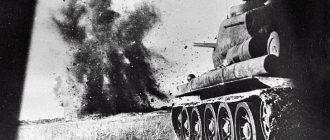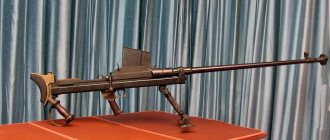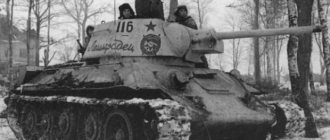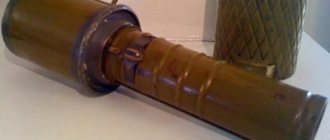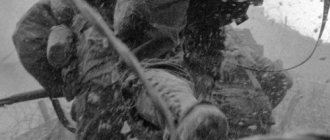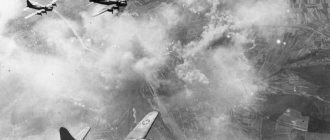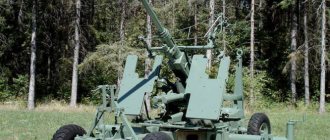Weapons of World War II. Anti-tank guns of the initial period
As promised, we are diluting the aviation branch with artillery. And we decided to start with anti-tank artillery. There is a certain sacred meaning to this, to be honest.
The story about anti-tank artillery of the pre-war period should begin not with a description of the guns, not with the concepts of the development of design ideas in different countries, and not even with the role of such artillery in modern warfare. Let's start with things that do not seem to be directly related to anti-tank artillery.
The tools that we will consider today are, in most cases, little known to the general reader. This happened not because they were few in number or the materials were classified. This happened because the designers of such highly specialized weapons, and the command of most armies of the world, including the Red Army, did not see the development trend of the opposing side - armored vehicles.
This is not a matter of the usual competition between armor and projectile, in which hypothetically the armor defeated the projectile. In general, such a thing happened, but not on the battlefield, but on paper. It’s just that no one could have predicted the appearance of such monsters as the KV-2, for example, in the mid-30s. That’s why no one really prepared.
Special mention must be made here about the Red Army. In our case, an axiom is violated, the correctness of which even among the authors of this material is beyond doubt. Any war, any military conflict, in addition to solving some political problems, reveals, among other things, the shortcomings or superiority of weapons. Simply put, war is the best testing ground for military equipment and weapons.
The military conflicts in which the USSR participated in the pre-war period, especially the Soviet-Finnish war, produced a completely opposite effect among our military. We made completely wrong conclusions about the power of our anti-tank artillery. Which later came back to haunt us with huge losses of personnel and territory. Everyone remembers very well the results of the use of the German “armored fist” from light tanks in 1941.
One clarification is necessary to cut off unnecessary debate among readers. Today we will talk specifically about anti-tank artillery. Not about guns that, due to the lack or low power of PTS, could be used against tanks and armored vehicles, but about specialized anti-tank guns.
37 mm Pak 35/36 gun. Germany
This gun generally became the progenitor for many anti-tank guns of the warring sides. First of all, because Germany actively promoted this weapon on the foreign market. In Japan, a copy of this gun was called the “Type 97”. In Italy - anti-tank gun mod. 37/45 In Holland - 37 mm Rheinmetall. In the USSR - the M30 anti-tank gun.
By the way, the M30 became the “mother” for a whole family of guns. Even in the American 37-mm M3 cannons you can see this particular weapon. So in reality it turned out to be a kind of anti-tank grandmother.
It is surprising that the gun, judging by its name, model 1935-36, became so popular in the world and was so quickly mastered by industry in various countries. Alas, the point is not in the simplicity or ease of production of this gun. It's all in the name.
In fact, the Rheinmetall concern has been quietly developing this weapon since 1925. Moreover, serial production of this gun began already in 1928. It was these guns that were purchased by various countries for testing and for using their own guns.
Today it is difficult to imagine a horse-drawn anti-tank gun. But in the late 20s and early 30s this was the norm. That’s why in newsreels we see this weapon on “bicycle” wheels. Wheels with spokes.
At the same time, this is a really good and advanced weapon for its time. The strongly inclined shield, the rather long but proportional barrel, and the tubular arms of the forked frame made a very favorable impression, especially against the backdrop of the guns of the First World War generation.
The name of this weapon known to us appeared later. In 1934, Hitler demanded that the gun be converted to mechanical propulsion. Which, given the light weight of the gun, was no problem at all. Rheinmetall replaced the wheels and that was the end of the alterations. In 1936, the gun was adopted by the Wehrmacht as the 37-mm Pak 35/36 cannon.
The Pak 35/36 gun has a fairly successful combat history. Already from the first use in 1936 in Spain, it became clear that the weapon was truly a success. Light tanks and other armored vehicles of the Republicans were destroyed by these guns without much difficulty.
The destruction of Polish tanks in 1939 was also the result of the use of these guns. Light, mobile guns, practically from wheels, began to fire murderously at the Poles. The Polish army could not do anything against this weapon due to the lack of countermeasures.
The Germans received the first “bell” about the end of the Pak 35/36 era in 1940. When France was captured, the guns could do virtually nothing against French heavy and medium tanks. The shells pierced the armor, but there was no effective penetration. In fact, German anti-tank gunners were the first to experience what our artillerymen experienced in 1942.
When attacking the USSR, the Wehrmacht also used these guns. Just out of despair. No other PTS was produced. Soviet T-34-76s successfully crushed German Pak 35/36 batteries with their tracks. The artillerymen could only put the tanks out of action for a short time by breaking the tracks or jamming the turret. We are silent about the KV, since there was no chance of even scratching this tank.
But the military service of this weapon continued even when the guns were withdrawn from the active army. The guns became training guns in artillery schools and garrison guns in the internal garrisons of Germany.
Advantages: lightweight, mobile, cheap to produce.
Disadvantages: the projectile is extremely weak in terms of ballistics and penetration.
M35 47/32 "Böhler". Italy
The next country that can boast of its own anti-tank gun is Italy. But here everything is conditional. Starting from the concept of “own” and ending with the concept of “anti-tank”.
We will talk about the famous 47-mm gun 47/32 M35, better known as “Böhler” or “Elephantino”.
Some experts and artillery enthusiasts of the pre-war period mistakenly believe that this weapon is Italian. The reason is banal. Italy actually produced the Böhler in such quantities that it seemed that this gun was created there.
In fact, this weapon was created in Austria. The miniature and mobile 47 mm gun was created to arm alpine riflemen. Accordingly, the gun, taking into account the realities of that time, had to be not only light, but also collapsible. Which is what was done. The gun was quickly disassembled into several units and moved perfectly in the mountains with the help of mules. Or - as an option - with the help of separating people.
This design simply pushed the designers to transfer the gun from the anti-tank category to the universal category. Which is what was done. 47/32 M35 became a weapon for direct infantry support. However, it cannot be said that she showed herself well enough in this capacity. A fairly mediocre weapon.
The Austrian army is small. Therefore, the gun was quickly brought to the foreign market, where not only the guns themselves were sold, but also licenses for their production. This is how guns appeared in Italy, Romania and Holland. We did not lag behind in this matter either. The USSR also received a small number of such guns. We know them as M35B.
Naturally, after the annexation of Austria in 1938, the Wehrmacht also acquired the guns under the marking Pak 47.
But the gun didn’t just fight, it seemed to fight in general, in all theaters and on both sides of the front. In 1942, the Allied armies in North Africa captured large numbers of Italian guns and about 200 of them were modified in Alexandria to British standards.
Such a gun could be aimed by one person (instead of two in the prototype), and the possibility of airborne landing was taken into account in the design of the frame. The gun received an optical rifle sight and a damper pad for a 6-pounder gun. And it was quite normal to hit on my exes.
Advantages: lightness, mobility, ability to work as a universal gun.
Disadvantages: a high-explosive projectile is much more effective than an armor-piercing one. The armor-piercing one was frankly weak.
Type 1. Japan.
The Japanese also acquired their own anti-tank gun. The gun we will present was Japan's only dedicated anti-tank gun during the entire war. And the role of this weapon in the war is insignificant. However, it is necessary to talk about it.
So, the anti-tank gun is type 1. Before the appearance of this gun, the Japanese PTS consisted of a copy of the German 37-mm Pak 35/36 - type 94.
Type 1 appeared already in 1941. At the same time, it was significantly inferior to European guns in terms of power. But one indicator was really good. Rate of fire up to 15 rounds per minute. This was achieved through the use of a semi-automatic wedge shutter. Decent for an infantry support weapon, but looks a bit strange for an anti-tank weapon.
But Japanese military experts decided that the weapon was successful. In general, all Japanese-made weapons were distinguished by their ease and ease of use in combat conditions.
But if we talk specifically about the use of “Type 1”, the rather large weight deprived the gun of the most important thing - mobility. And changing positions was not an easy process. We add to this a certain frenzy of Japanese soldiers, who preferred to die along with the guns, and the result is a constant shortage of anti-tank guns in the Japanese army.
Advantages: good projectile ballistics, ease of operation.
Disadvantages: weight.
Skoda model 36. Czechoslovakia
There is another country that was annexed by Germany. This is Czechoslovakia. Yes, it was Czechoslovakia that was the first in Europe to begin developing specialized anti-tank guns.
The gun we present today is the second anti-tank gun from this company. The first, a 37-mm model of 1934, was not put into production. Skoda engineers already realized the futility of the 37 mm caliber. Therefore, in 1936, the 47-mm model 36 gun was developed and put into production. After the capture of the Sudetenland, the model 36 guns found their way into the German army.
A few words should be said about the weapon itself. At that time it was the most unusual weapon. Starting from the shield, which had an asymmetrical curved shape and ending with a large muzzle brake with one reflective baffle and a large brake recoil cylinder along the upper surface of the barrel.
At the time of its creation, the 36 was the most powerful in Europe. It fired fairly heavy (1.65 kg) shells that penetrated the armor of any tank of that time at distances of up to 600 m. The effectiveness of its classmate guns at that time did not exceed 200-250 m. However, in field conditions the gun turned out to be quite clumsy.
The gun went through the entire war in the active army and was even installed on self-propelled guns.
Advantages: armor penetration, projectile efficiency.
Disadvantages: weight, mobility.
25-mm gun model 1934. France
France at the beginning of the 20th century was a trendsetter in artillery fashion. And in theory, during the period described, there should have been the most powerful anti-tank guns. And French design thought, especially in the field of artillery, has always been at the forefront of the world.
In fact, everything was very twofold.
The first weapon that deserves our attention is model 5A-L1934. Despite the fact that the gun was put into service in 1934, the development of this weapon dates back to the 20s of the 20th century. True, it was developed for installation on a tank.
In fact, the gun was installed on a light chassis only in 1932. And they actually adopted it for service in 1934.
But soon, due to the fragility of the chassis design, the gun was placed on a car. In general, the gun was quite well thought out, but its meager caliber actually deprived it of even the theoretical ability to hit contemporary armored vehicles.
Advantages: light weight and ability to be installed on equipment, projectile with good ballistics
Disadvantages: caliber, weak projectile, weak suspension.
47-mm anti-tank gun model 1937 France
But in the pre-war period the French also had another gun. Created in the shortest possible time by Atelier de Pitot, the 47-mm anti-tank gun mod. 1937. A gun that the French themselves simply idolized. Designed to destroy specific tanks - German PZKpfw IV. But it actually penetrated the armor of any potential enemy tank existing at that time.
Alas, this gun was adopted for service only in 1938, and mass production began only in 1939. At the start of the war with Germany (May 1940), the French army experienced a catastrophic shortage of these guns. But the Germans later widely used this gun under the name 47-mm Pak 141(f). And they even successfully destroyed Allied armored vehicles during the Normandy landings in 1944.
The weapon was really successful and advanced. Along with towed guns for field use, models were produced for permanent installation in the fortifications of the Maginot Line. They did not have a chassis, and they were installed at the firing position on special ceiling rail suspensions. The shooting was carried out through specially shaped concrete embrasures. In 1939, a slightly modified model appeared. 1937/39. And in 1940 - a new gun, in which the same barrel was mounted on a three-support frame, providing a horizontal guidance angle of 360°.
The main problem was the meager production of the gun. This, however, was corrected by the Germans.
Advantages: heavy and penetrating projectile with good ballistics.
Disadvantages: weight.
Vickers-Armstrong 2 lb. Great Britain
Another coalition country, Great Britain, also had its own anti-tank gun. Developed in 1934, the 2-pounder anti-tank gun. Looking at the design of this weapon, you understand that for its time it was a good weapon, but nothing more.
The massive weapon could not move quickly, and was not equipped for this. So the shooting was carried out from stationary positions. And the complexity of the gun’s design required quite serious training from the crew.
The gun began to be supplied to the British Army only in 1938. The four years lost by the cannon turned the weapon from a fully functional and even advanced one in some ways into an obsolete one. The rapid development of tanks was to blame. Improving the quality of armor, and the thickness of armor in general.
Therefore, already in 1940, when hostilities began, the gun became ineffective. Its use in 1941-42 in North Africa generally put an end to this weapon. The gun was withdrawn from service in 1942.
Advantages: a good armor-piercing projectile with good ballistics.
Disadvantages: weight, lack of chassis, complex design.
45 mm M1932 gun. THE USSR.
And finally we came to the USSR. We did not lag behind European countries, although we were not among the leaders. Our anti-tank guns of the pre-war period are in fact the same German 37-mm Rheinmetall guns, which the Germans themselves even later unified and called 37-mm Pak 35/36. We decided to independently increase the caliber of the gun to 45 mm.
It was an M1932 gun. By 1940, the Red Army already had a sufficient number of these guns. These are the guns that were sent to the Republicans in Spain in 1936. By the way, this war made minor adjustments to the design of the gun. A new version was released in 1937.
At the beginning of the article, we promised to talk about the incorrect conclusions of our military after the Soviet-Finnish war. This directly applies to the 45 mm anti-tank gun. Lightly armored Finnish vehicles and the same “cardboard” tanks were easy prey for the M32 “forty-fives”. Therefore, they decided to postpone the development of new VET until more pressing problems were solved.
The beginning of the Great Patriotic War showed the stupidity of this conclusion. However, even when it “caught fire”, for some reason, instead of urgently launching the production of the same 57-mm Grabin anti-tank guns, the artillery command of the Red Army chose to modernize the old “forty-five”. The modernization consisted of lengthening the barrel (from 46 to 66 calibers). This significantly increased the effectiveness of the M1942 gun.
In this form, the weapon ended the war, and after the war it participated in several more armed conflicts and wars.
Advantages: good projectile, mobility.
Disadvantages: practically none.
37 mm M3A1 anti-tank gun. USA.
Also a clone of the German 37 mm Pak 35/36. Created on its basis, the American M3 anti-tank gun. In an attempt to reduce the effect of recoil forces on the frame, the gun was given a muzzle brake, which was eventually abandoned. The armor shield was small and flat.
By the time this evil little girl entered the army, she was already outdated not only morally, but also physically.
By 1941, fighting in Europe and North Africa showed that larger caliber weapons were needed to penetrate the armor of modern tanks. And the cannon immediately began to be replaced by other, more powerful weapons.
But in the Pacific Ocean, the M3A1 “went”: Japanese tanks were lighter, there were few of them, and they attacked more dispersed. And it was possible to fight them quite well with this gun.
For use in amphibious operations to capture numerous islands, high-explosive and incendiary ammunition was developed specifically for this anti-tank gun. Concrete pillboxes, so beloved by the Japanese, were quite normally pierced by armor-piercing shells.
The low mass of the gun proved to be very useful during these amphibious operations, so they continued to be produced specifically for operations in the Pacific Ocean.
Advantages: weight, mobility, good projectile in terms of ballistics.
Disadvantages: the projectile is frankly weak.
If we consider the anti-tank guns that started World War II, we can draw an unpleasant conclusion for artillerymen. The development of tanks and armored vehicles of the world's leading armies in the 30s and early 40s was ahead of the development of anti-tank artillery. VETs could not keep up with the rapidly developing tanks.
This, in many ways, determined the huge losses in the initial period of the war, when the Germans widely used the tactics of tank wedges and raids of tank units in the rear. There was simply no one to protect the infantry from powerful, well-protected tanks.
However, war is a locomotive for designers. And at the turn of 1942-43, a new generation of anti-tank guns appeared on the battlefields. But this is the subject of the next article.
47 days before the Great Patriotic War, Stalin said the words that later became famous: “Artillery is the most important branch of the military.
Artillery is the god of modern warfare." For artillery, the 20th century, with its two major wars, became a new stage of development. By that time, it had already traveled a centuries-old path and, along with the infantry and cavalry, was the oldest branch of the military. Already from the first days of World War II, artillery showed itself to be quite effective in the new conditions. Anti-aircraft and anti-tank artillery became the force that was capable of neutralizing the two main threats of that war - tanks and aircraft. A wonderful documentary series of 4 episodes filmed by the Wings of Russia studio. See also their other docs. films tagged “Wings of Russia”. Episode 1
God of War On May 5, 1941, a formal reception was held in the Kremlin dedicated to the graduation of students from military academies. After the official part, at the banquet, Stalin uttered the famous words: “Artillery is the god of modern war!” There were 47 days left before Germany invaded the USSR. With what artillery weapons did our country approach the beginning of this tragic period in our history? This series focuses on divisional artillery, both Soviet and German.
Episode 2. Difficult target
Having started the Second World War, Germany relied on tank troops and aviation as the main tools of blitzkrieg tactics. Anti-aircraft and anti-tank artillery were supposed to neutralize these two main threats. Before the first raid on Moscow, Field Marshal Kesselring promised the pilots an “easy ride.” However, in this raid, 22 aircraft were shot down, almost half of them were by air defense. And the Soviet artillery, unlike the German, was well prepared to fight tanks. And in the initial, most difficult period of the war, many air defense guns were used as anti-tank weapons. During the Battle of Moscow, the crew of one anti-aircraft gun under the command of Gaik Shadunts stopped the attack of 23 German tanks.
Episode 3. Artillery duel
During the Second World War, German heavy artillery operated at full capacity only in the Soviet Union. This meant one thing - the German victorious blitzkrieg tactics were over. The Wehrmacht began to use heavy-duty artillery pieces, including the 800-millimeter Dora railway mount. Its shell weighed over 7 tons. And the Red Army successfully fought with the domestic ML-20 howitzer gun with a caliber of only 152 mm. To combat tanks, its shells did not even require a direct hit.
Episode 4 New weapons
During the Great Patriotic War, the Red Army acquired two new types of weapons - rocket and self-propelled artillery. Already in mid-July 1941, the Orsha railway station was attacked by BM-13 rocket artillery combat vehicles - the legendary Katyushas. All attempts by German designers to produce such weapons did not lead to success. And the creation of self-propelled artillery was due to a turning point in the course of the war: mobile guns were most needed precisely in the offensive. This is how the legendary self-propelled guns - SU-76, SU-122, SU-85, SU-100, as well as the famous “St. John's worts” - ISU appeared in the arsenal of our army.
The most powerful naval guns of World War II
Musashi fires its main gun, July 26, 1942.
The largest guns in history
. World War II demonstrated the importance of large caliber artillery. At the same time, the race of calibers took place not only on land, but also at sea. Almost all maritime powers developed powerful artillery systems for their battleships, which were supposed to provide the ships with superiority over the enemy.
Many countries have been able to develop artillery guns with a caliber of more than 400 mm for their surface warships. The Japanese went the furthest, arming the Yamato-class battleships with 460-mm naval guns. It was the Japanese naval gun that became the largest and most powerful among all naval guns that participated in World War II.
At the same time, the 406-mm caliber was conquered by the United States, which massively used such guns on its battleships. Germany and the USSR also created 406-mm naval guns, although they never made it to ships. The Germans were able to assemble at least a dozen 406 mm guns, all of which were used exclusively in coastal artillery. The Soviet Union created its 406 mm naval gun B-37. As part of the MP-10 experimental turret installation, the gun took part in the defense of Leningrad.
Yamato main caliber
Among the most powerful naval guns of the Second World War, the first place rightfully belongs to the Japanese naval 460-mm naval gun Type 94. This gun was in service with the two largest and most famous Japanese battleships today, Yamato and Musashi. It was planned that it would be installed on the third Yamato-class battleship, but Shinano was subsequently completed as an aircraft carrier, and it did not need main-caliber artillery.
Main caliber stern turret of the battleship Yamato with 460 mm Type 94 guns
Work on the 460-mm naval gun was carried out in Japan from 1934 to 1939, and engineer S. Hada supervised the work. The unique naval artillery was developed in the strictest secrecy. The gun was adopted under the designation 40-SK Mod. 94. This designation remained until the end of the war and was part of the disinformation.
The measures taken by the Japanese Navy to maintain secrecy around this artillery system were unprecedented. The Americans were able to learn about the true caliber of the artillery of the Yamato-class battleships only after the end of hostilities; before that, they believed that the most advanced Japanese battleships were armed with 406 mm guns.
The production of new guns continued in Japan from 1938 to 1940. During this time, it was possible to create 27 barrels, including two intended for field testing. Six complete three-gun turret installations were installed on the two battleships Yamato and Musashi, the remaining barrels were intended for further armament of the third battleship of this type.
The three-gun turret installations of the battleship Yamato weighed 2,510 tons, with ammunition - 2,774 tons, this exceeded the displacement of most destroyers of the Second World War. Armor-piercing and incendiary shells were developed for firing from 460 mm guns. The latter were, in fact, anti-aircraft ammunition containing 600 fragmentation and 900 incendiary elements. The 460 mm Type 91 armor-piercing shell was the heaviest shell used in World War II naval battles. Its mass was 1460 kg.
The 460 mm Type 94 naval gun could send shells weighing almost 1.5 tons to a maximum range of 42 km, with an altitude reach of 11 km. The initial flight speed of the projectile is 780–805 m/s. The maximum rate of fire of the guns was 1.5–2 rounds per minute. Elevation angles from -5 to +45 degrees.
Bow turrets with 460 mm guns of the battleship Mushasi during testing, May-June 1942
Barrel length of guns 40-SK Mod. 94 was 45 calibers, more than 20 meters. The weight of the barrel and bolt exceeded 165,000 kg. The shells of this artillery system had good armor penetration. At a distance of 20 kilometers, the 460-mm Yamato armor-piercing projectile penetrated 566 mm of vertical armor.
Experts rated the Japanese Type 94 naval gun as very reliable. The artillery system of the most powerful Japanese battleships did not suffer from the “childhood diseases” characteristic of complex equipment. True, this still did not allow the guns and battleships to express themselves. Created to fight the battleships of the American fleet, both Japanese heavy-duty battleships eventually became victims of aviation, without having time to inflict any significant losses on the enemy.
Guns for German super battleships
Before the outbreak of World War II, the battleships Bismarck and Tirpitz were laid down and built in Germany.
The battleships were commissioned after the start of hostilities. At the same time, the main caliber of the pride of the German fleet were 380 mm guns. These were powerful and quite successful guns, but at that time many battleships of Germany’s opponents could boast of a large caliber of artillery. The “N” type battleships were supposed to correct the situation at sea. As part of Germany's ambitious shipbuilding program of 1939 (hence the other name for the project "N-39"), it was planned to build six new type of battleships at once, which would surpass the Bismarck in size. The main armament of the new ships was to be 406 mm or 420 mm guns.
Turret installation of a 40 cm SKC/34 gun on the Trondenes battery in Norway
The development of these artillery systems was carried out in Germany in the 1930s. The guns were created by the Krupp concern and were fully ready by 1934, like the 380 mm Bismarck guns. The 406 mm guns were designated 40 cm SKC/34. The project provided for boring their barrels to a caliber of 420 mm; this type of gun was also planned to be used in the development of Project N battleships.
Due to the cancellation of the construction of N-class battleships, the guns were represented only in coastal artillery. Before the start of World War II, only two hulls of new battleships were laid down in Germany; the remaining ships were not even laid down. At the same time, the project was abandoned in October 1939 after the outbreak of World War II.
By that time, 12 406-mm guns had been assembled. Among them, one is experimental, three are in the ship version and 8 are in the coastal version. Ultimately, it was decided to use all the guns in coastal defense, where they became the basis of the most powerful German coastal batteries.
The 40 cm SKC/34 guns had a caliber of 406.4 mm and a barrel length of 52 calibers. The weight of the gun barrel and breech alone is estimated at 159,900 kg. The shutter is wedge, horizontal type. On ship versions, for ease of loading guns, the bolt had to open in different directions. The maximum gun elevation angles are 52 degrees. Another difference between the sea and coastal versions was the size of the charging chambers. The ship's guns have 420 cubic meters. dm, for coastal guns - 460 cubic meters. dm.
The barrel survivability of the 406 mm guns was estimated to be 180–210 rounds. Armor-piercing, semi-armor-piercing and high-explosive fragmentation shells weighing 1030 kg could be used as ammunition. Their maximum flight speed was 810 m/s, and their maximum firing range was up to 42–43 km. The rate of fire of the guns reached two shots per minute.
Lindemann battery. German sentry on duty near a 406 mm gun
Later, already in 1942, lightweight high-explosive fragmentation shells were designed specifically for coastal defense guns. These 610-kg ammunition at the maximum elevation of the gun developed a flight speed of up to 1050 m/s, and the maximum firing range soared to 56 km.
The 406-mm guns of coastal batteries were placed in single Schiessgerät C/39 mounts, providing elevation angles from -5 to +52 degrees. For additional protection, they were covered with concrete casemates. The armored towers were located in ring courtyards of concrete casemates, sunk into the ground to a depth of more than 11 meters. The crew of each gun consisted of 68 people, including 8 officers.
The Germans placed one of the batteries, consisting of three guns, near the small French town of Sangatte, west of Calais. The battery was named Lindemann. Since the autumn of 1942, this battery fired at Dover in Great Britain and the Strait of Dover. A total of 2,226 shells were fired at Dover from 1942 to 1944 (until the capture of the battery positions by Canadian troops).
The Germans placed two more batteries in Norway; in 1941, 8 guns were sent there, but one of them sank during transportation. The Germans used coastal batteries armed with 406 mm 40 cm SKC/34 guns to defend Narvik and Tromsø. After the end of World War II, these guns went to the Norwegian army. The last time they fired was in 1957, and in 1964 the batteries were finally disbanded.
The main caliber of battleships of the "Soviet Union" class
In the Soviet Union, as in Germany, before World War II there were ambitious plans for the development of the fleet. As part of the approved construction program of the “Large Sea and Ocean Fleet” in the USSR in the late 1930s – early 1940s, four Project 23 battleships of the “Soviet Union” type were laid down. Soviet battleships were supposed to be the largest and most powerful in the world, but none of them were ever completed.
B-37 cannon in a single-barrel MP-10 experimental installation in the workshop of the Novokramatorsk plant, 1939
The construction of battleships was stopped after the start of the Great Patriotic War; at that time, the readiness of the lead battleship "Soviet Union", laid down in 1938 in Leningrad, was 19.44 percent. And if the battleships were never created, then the main caliber artillery for them was developed. The artillery armament of the Soviet super-battleships relied on the 406-mm B-37 naval gun. The battleships were planned to be armed with 9 such main caliber guns, arranged in three turrets.
Due to the termination of the project for battleships of the "Soviet Union" type in July 1941, work on the further development of the B-37 naval gun and the MK-1 turret for it was curtailed. At the same time, a ready-made experimental single-barrel MP-10 range mount with a 406-mm B-37 gun took part in the defense of Leningrad. During the period of hostilities, the gun fired 81 shells at German troops in the vicinity of the city.
The first B-37 gun was ready by December 1937; the guns were assembled at . A total of 12 guns and five swinging parts for them, as well as a batch of shells, were produced. By the beginning of the Great Patriotic War, one of the guns as part of the MP-10 experimental installation was located at the Scientific Research Artillery Range near Leningrad (Rzhevka).
It was not possible to evacuate the installation due to its enormous weight, so the gun ended up taking part in the defense of the city on the Neva. The installations were prepared for all-round fire and were additionally armored. The Soviet 406-mm cannon fired its first shots at the advancing German troops on August 29, 1941.
406-mm shell from the B-37 gun. Exhibit of the Naval Museum, St. Petersburg
Finding yourself under the shells of this weapon was an extremely unpleasant experience. 406-mm armor-piercing shells weighing 1,108 kg left behind a crater with a diameter of 12 meters and a depth of up to three meters. Depending on the elevation angle of the gun, the rate of fire was supposed to be from 2 to 2.6 rounds per minute. The survivability of the bonded barrel was 173 shots, which was confirmed during testing. The maximum firing range of the gun was approximately 45 km.
The weight of the B-37 gun barrel with bolt was 136,690 kg, the barrel length was 50 calibers. The elevation angles of the gun ranged from -2 to +45 degrees. It was planned to use armor-piercing, semi-armor-piercing and high-explosive shells to fire the gun. The latter did not have time to be developed. At the same time, an armor-piercing 406-mm projectile weighing 1108 kg when fired developed an initial speed of 830 m/s. At a distance of 5.5 kilometers, such a projectile is guaranteed to penetrate armor plate 614 mm thick.
After the end of the war, the use of the MP-10 prototype for shooting new ammunition continued into the 1950s and 1960s. One installation with a B-37 gun has survived to this day, which is still located at the Rzhev artillery range near St. Petersburg.
